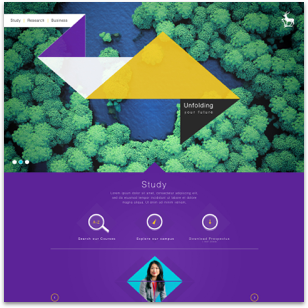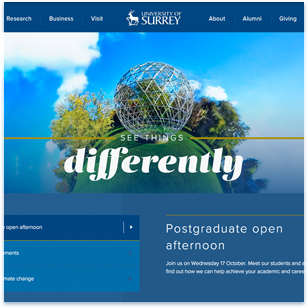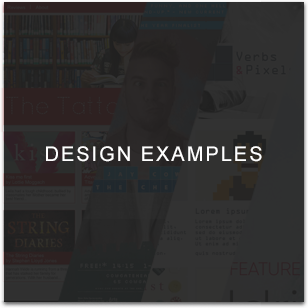ux design lead
BRIEF: UNIVERSITY OF SURREY SUBJECT CAMPAIGN PAGES
I was asked to update the design for 19 campaigns pages promoting undergraduate and postgraduate degrees. My personal goal was to create a template that would work for all these pages rather than make 19 unique designs.
1. RESEARCH (PERSONAS, DATA, COMPETITOR)
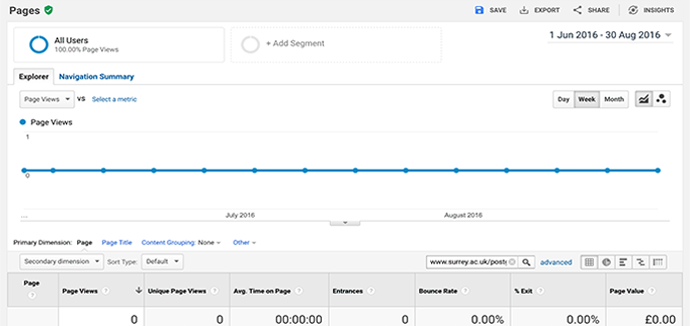
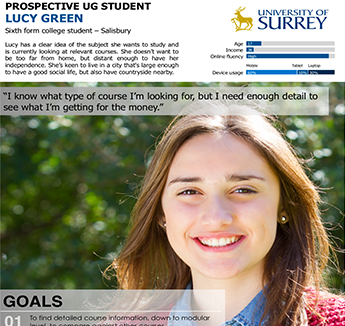
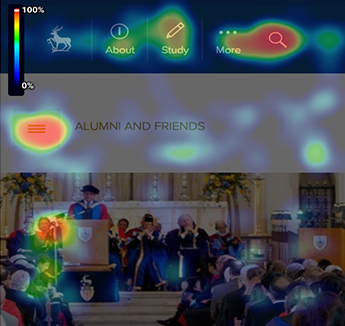
My first step in any project is to ask my client to complete my quick design brief. This helps us get on the same page and focus on user needs. If it's a clients first time working with me I'll often suggest completing the form together to explain the thinking behind it.
As this project was to update existing pages I researched the user behaviour on the current pages using Google Analytics, heat maps and session recordings. I wanted to understand what content the user engaged with and what they ignored. Often I will create a research document to share my findings.
Once I have an idea of the priority of content it's time to wireframe. Sometimes this will be drawing with the client or, if I feel I need more time to think, I'll create a digital wireframe using Sketch.
2. WIREFRAME (TALK, SKETCH, USER FLOWS, WIREFRAMES)

3. CONCEPTS AND DESIGNS

Knowing this was an important project, with time to develop, I also created a page of optional extras for marketing to consider using in their campaigns.
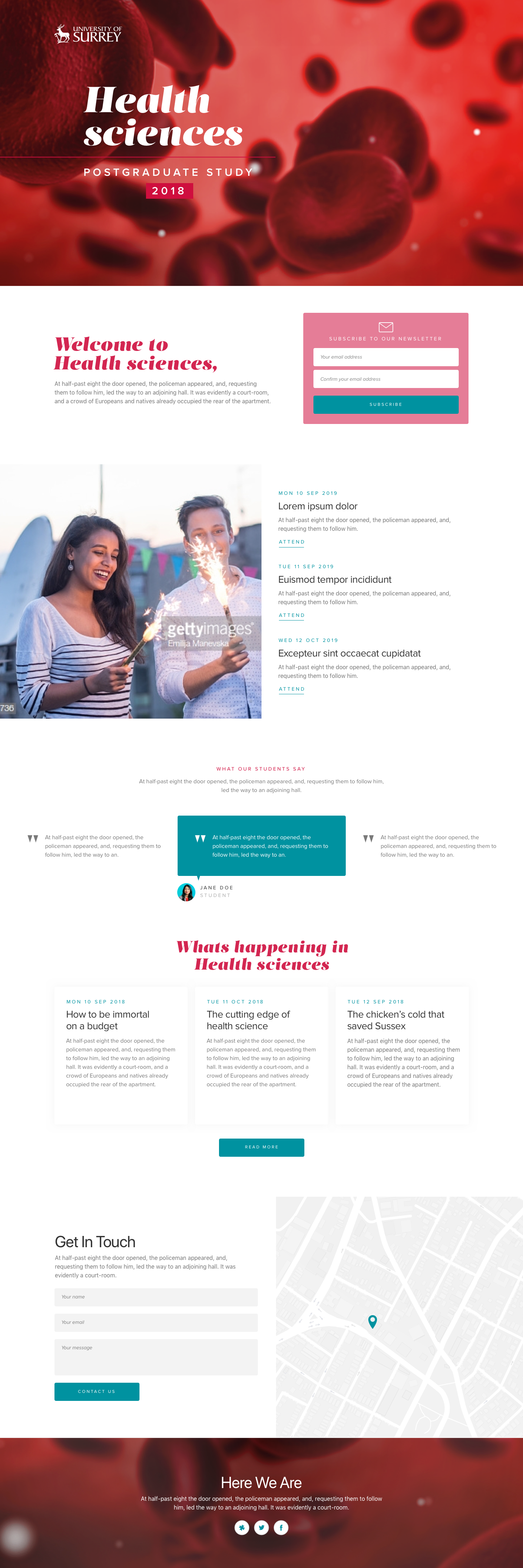
4. TEST
I use a variety of methods to test concepts. These range from showing the designs at my bi-monthly user group sessions, to creating clickable prototypes for A-B testing in the user groups or even using an A-B testing company like AB Tasty for quantitative testing.
For smaller scale projects I may choose to build and release the project without testing, being prepared for quick iteration if any struggle spots are identified in the User Journey.
5. REVIEW: (DATA, USER GROUP FEEDBACK, ITERATE)
Based on the objectives set out in the Design Brief I will monitor the percentage of users completing the primary CTA's. This may range from signing up for an email to viewing a degree. Whilst it is not always the design causing low click throughs (for example if content is boring or too complicated) if struggle points are identified I will look at iterating on the design to improve visability or suggest a different tact such as: 'Why not show this course from a student's perspective?'.





